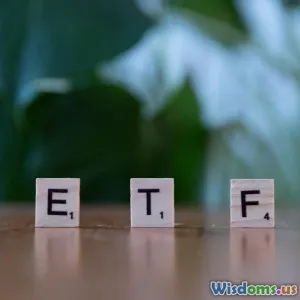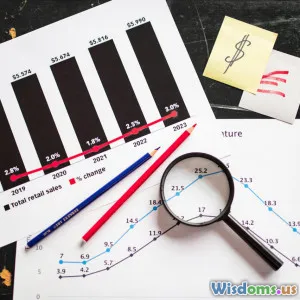
How Index Funds Beat Stock Picking for Retirement Savings
10 min read Explore why index funds outperform stock picking for retirement savings, backed by data and expert insights. (0 Reviews)
How Index Funds Beat Stock Picking for Retirement Savings
Introduction: The Retirement Investing Dilemma
Planning for retirement involves a crucial decision: How best to invest your hard-earned money to secure financial comfort in your golden years? For decades, individual investors and financial advisors have debated whether active stock picking or passive index fund investing is the superior strategy. While the allure of handpicking individual stocks promises the thrill of beating the market, time and empirical data increasingly show that index funds consistently deliver better retirement outcomes.
This article dives deep into why index funds outperform stock picking when it comes to retirement savings, exploring the underlying reasons involving costs, risk management, and behavioral factors. Whether a novice investor or seasoned saver, understanding these dynamics can dramatically influence your retirement success.
The Challenge of Stock Picking
What Is Stock Picking?
Stock picking involves selecting individual company shares believed to outperform the market. This approach assumes an investor—or their fund manager—can identify undervalued stocks or future winners through analysis and market research.
The Reality: Few Beat the Market Consistently
While some top investors like Warren Buffett are celebrated for their stock-picking skills, studies show that most investors—including professional fund managers—fail to consistently outperform broader market benchmarks, especially over long periods. Morningstar research finds that over 80% of actively managed large-cap funds underperform their respective indexes over ten years.
High Costs: The Quiet Portfolio Drain
Actively managed funds and frequent stock trading generate higher expense ratios and transaction fees, which chip away at returns. According to a 2020 report by Vanguard, the average expense ratio of actively managed equity funds was 0.74%, compared to 0.06% for index funds. While 0.68% might seem small, compounded over decades, the cost difference deprives savers of substantial growth—costs that index funds largely avoid.
Behavioral Pitfalls: Emotions and Timing
Stock picking hinges on judgment calls that can easily be swayed by emotion. Studies published in the Journal of Finance show that individual investors tend to buy high amid market euphoria and sell low during downturns—a behavioral bias leading to suboptimal returns.
Introduction to Index Funds
What Are Index Funds?
Index funds are mutual funds or exchange-traded funds (ETFs) designed to replicate the performance of a specific market index, such as the S&P 500. Rather than attempting to beat the market, index funds seek to match it, offering broad market exposure, low expenses, and minimal turnover.
The Power of Diversification
By owning all or a representative sample of companies in an index, investors automatically diversify across sectors, reducing company-specific risk. This diversification effect significantly lowers volatility compared to holding a handful of individual stocks.
Cost Efficiency and Transparency
Index funds benefit from passive management, drastically lowering fees. Plus, their holdings are publicly known and stable, providing investors with certainty about where their money is invested.
Why Index Funds Win for Retirement Savings
1. Evidence of Superior Long-term Performance
The landmark study by S&P Dow Jones Indices in their 2022 SPIVA report confirmed that over the past 15 years, approximately 80% of actively managed funds underperformed their benchmarks. By simply buying and holding an index fund, investors capture the market’s long-term upward trend without exposing themselves to costly mistakes.
For example, from 2000 to 2020, the Vanguard 500 Index Fund (VFIAX) yielded an average annual return of about 7% after fees, while many actively managed large-cap funds lagged behind by 1-2% annually. Over 20 years, even a 1% return advantage compounds dramatically—turning $100,000 into approximately $386,000 instead of $328,000.
2. Cost Savings Dramatically Impact Growth
Reducing investment fees directly boosts your retirement nest egg. To illustrate, a fee of 1% annually on a $200,000 investment can cost nearly $200,000 over 30 years compared to a 0.05% fee index fund, as calculated by the Investor Education Foundation.
3. Behavioral Simplicity and Discipline
Index funds encourage a “buy and hold” mentality supported by automatic investments and rebalancing. This approach mitigates emotional decision-making, helping investors stay the course during market turbulence—a key advantage given that markets have historically recovered and thrived over time.
Warren Buffett himself advocates index funds for most investors, famously saying: “A low-cost index fund is the most sensible equity investment for the great majority of investors.”
4. Tax Efficiency
Index funds produce fewer capital gains distributions due to lower turnover. For taxable accounts, this means less tax drag, ultimately preserving more wealth for retirement.
Real-World Examples
Case Study: Individual Stock Picking vs. Index Investing
Consider two fictional investors both starting at age 30 with $50,000 saved, adding $5,000 annually, retiring at 65.
-
Investor A chooses individual stocks, incurring average annual trading fees of 0.5% and turnover, leading to a 0.75% higher annual cost overall, and hits inconsistent returns due to poor timing decisions.
-
Investor B selects a low-cost S&P 500 index fund with an 0.05% expense ratio and follows a disciplined investing routine.
Over 35 years, despite Investor A achieving sporadic spikes in returns, compounded costs and emotional selling during downturns cause their final portfolio to be nearly 25% smaller than Investor B’s portfolio.
Institutional Adoption
Notably, large pension funds and endowments have increasingly embraced passive indexing strategies. According to a 2023 State Street report, nearly 50% of U.S. equity assets managed by institutional clients are now indexed, underscoring confidence in the approach.
Potential Drawbacks and When Stock Picking Might Work
While index funds excel for most, active management isn’t without merit:
- Niche Markets: Active stock picking may yield advantages in less efficient markets like small-cap or emerging economies.
- Tax Loss Harvesting: Skilled investors might leverage tactical trades to limit tax impact, though this requires expertise.
- Personal Control: Some investors enjoy the challenge and control of choosing stocks, accepting risks for potential upside.
However, for the average retirement saver, these advantages rarely compensate for lower average returns and higher risk.
Conclusion: A Clear Path for Retirement Success
Choosing index funds over stock picking doesn't just reduce headaches—it materially boosts your chances of retiring comfortably. Evidence from decades of market data and hundreds of academic studies resoundingly shows that index funds' low fees, broad diversification, tax efficiency, and behavioral simplicity give them a clear edge in growing retirement savings.
While the stock market can be unpredictable, your investing approach doesn't have to be. Embrace passive index funds as a cornerstone of your retirement strategy to optimize growth, manage risk, and sleep better knowing your future is secured by a smart, time-tested method.
As financial expert John Bogle put it, “Don’t look for the needle in the haystack. Just buy the haystack!”
Making the switch from chasing stock picks to steady indexing could be the most impactful financial decision you make this decade.
Rate the Post
User Reviews
Popular Posts



















